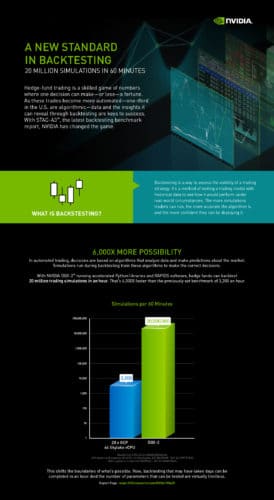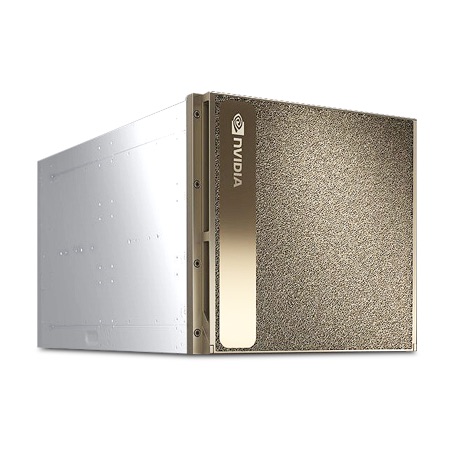Today NVIDIA announced record performance on STAC-A3, the financial services industry benchmark suite for backtesting trading algorithms to determine how strategies would have performed on historical data.
Using an NVIDIA DGX-2 system running accelerated Python libraries, NVIDIA shattered several previous STAC-A3 benchmark results, in one case running 20 million simulations on a basket of 50 instruments in the prescribed 60-minute test period versus the previous record of 3,200 simulations.
STAC-A3 parameter-sweep benchmarks use realistic volumes of data and backtest many variants of a simplified trading algorithm to determine profit and loss scores for each simulation. While the underlying algorithm is simple, testing many variants in parallel was designed to stress systems in realistic ways.
The ability to run many simulations on a given set of historical data is often important to trading and investment firms,” said Michel Debiche, a former Wall Street quant who is now STAC’s director of analytics research. “Exploring more combinations of parameters in an algorithm can lead to more optimized models and thus more profitable strategies.”

The benchmark results were achieved by harnessing the parallel processing power of 16 NVIDIA V100 GPUs in a DGX-2 server and Python, which uses NVIDIA CUDA-X AI software along with NVIDIA RAPIDS and Numba machine learning software.
RAPIDS is an evolving set of libraries that simplifies GPU acceleration of common Python data science tasks. Numba allows data scientists to write Python that is compiled into the GPU’s native CUDA, making it easy to extend the capabilities of RAPIDS. RAPIDS and Numba software make it possible for data scientists and traders to replicate this performance without needing in-depth knowledge of GPU programming.
Results are cited from the STAC-A3.β1.SWEEP.MAX60 benchmark. See the official STAC Report for details.





